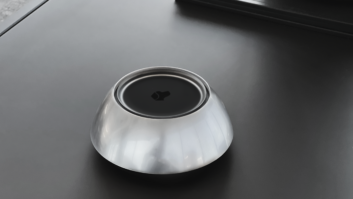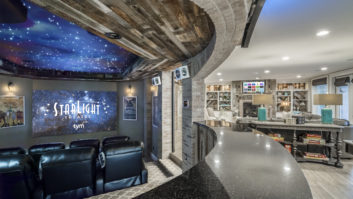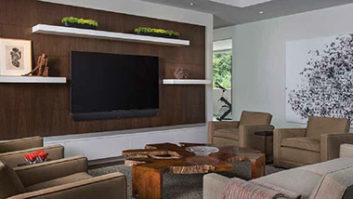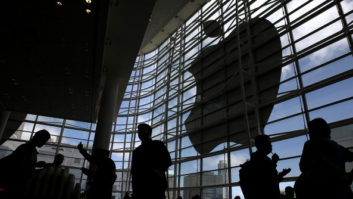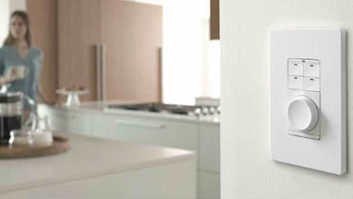Editors Note: This article was written in mid-December, well before the January 7-10, 2008 Consumer Electronics Show (CES) in Las Vegas. Therefore, some of Mr. Heiss comments are subject to correction and further discussion in the months to come. Much of the information is based on material provided to us in advance. The rest, as they say, is commentary.
The Consumer Electronics Associations 2008 International CES has become a significant behemoth in the technology world. With a show floor expected to swell to 2,700 exhibitors, many of them targeting the consumer and retail markets, it might seem that custom integration professionals and manufacturers will be swallowed up by mass appeal. The CI industry, however, still has a significant presence in and impact on the global electronics business. Heres a look at some of the trends and products that will reach a crossroads at this years show.
DTV Transition
With a bit more than a year remaining until the end of analog over-the-air broadcasting in the United States, digital television and HDTV will clearly be a hot topic at CES. While displays will capture most of the attention in the popular press, they are only part of the puzzle for the end-game of the lengthy DTV transition. For example, CES will be the coming out party for the long-awaited set-top converter boxes. Driven in large part by the NTIAs $40 Coupon Voucher program, many of the boxes will be shown for the first time.
Its easy to dismiss these relatively inexpensive products as being outside of the custom installation world, but its likely that on February 18, 2009, even the most exotic high-end home will still have some sets around without ATSC tuners or a cable connection. Remember, it is not only TV sets that will need outboard DTV tuners, but what about the odd VCR that is still hanging around, or an earlier vintage DVD recorder?
While the basic feature set for these boxes is established by federal regulation, there is some leeway allowed. Some, for example, will have analog pass-through, and some will not. This is an important feature to look for in less-populated rural and fringe areas where analog broadcasting by low-power repeaters and translators (still permitted after the shut-off date) may mix with standard DTV reception. Further, some of the boxes will have jacks for Smart Antennas, while others will not. If this is important to one of your clients due to the location of the residence, use the products on display at CES to look for the right product to fit that need.
Though not directly CES related, this is a good time to remind you to make sure that all of your clients have applied for the two $40 Coupons since the application process started on January 1. They have to do this themselves; you cant do it for them. Coupons will be mailed out on February 17, 2008exactly one year before the analog shut off. A further reminder: Have you completed the application process to accept the vouchers? Otherwise someone will have to pick them up at a big-box retailer, or even worse, from one of your competitors.
Consider All Display Brands
To spread higher quality video around the home as those old analog sets are replaced, brands such as LG will expand its offerings of 1080p LCD displays down to the 32-inch-wide screen size, along with more 120Hz sets at a wider range of screen sizes to differentiate top-tier brands and models from the growing array of second- and third-tier brands. Similarly, look for plasma to also extend back down below 42-inch-wide screen sizes, though to the degree and with the range that LCD can.
At the same time, dont belittle the newer brands. Yesterdays third-tier brand may be todays second tier, and just because the brand is new or licensed doesnt mean it cant be considered a first-tier brand. The likes of Westinghouse, once relegated to the bargain rack, have earned their spot with the big boys as full featured lines. Remember, it wasnt that long ago that many considered Samsung and LG second tier. That certainly isnt the case today. Did you look at all of the brands to see if your product mix requires any re-alignment?
Rear-Projection Relevance
Perhaps critical to attendees of the show is what the state of the world will be for rear projection. A number of brands have abandoned it, and many are reducing their offerings. In the face of increased competition from flat panel, RPTVs future seems to lie in alternative light sources such as LED and laser-based illumination. Weve already seen the former from Samsung and others, and CES will see the formal premiere of the latter from Mitsubishi. Sony showed a laser-powered SXRD at CES last year, it will be interesting to see if it is productized and scheduled for retail sale at this years event.
Why laser or LED? In both cases it enables RPTV to offer a thinner cabinet footprint that, when you consider the space required for a flat panels stand, is no deeper than the space required to sit an LCD or plasma on a shelf. Both light sources also do away with the need to replace RPTV lamps. Equally important, both light sources also lead the way for one area where RPTV may have an initial advantage over flat panel: the ability to work with 3D video systems. CES will most likely see two or three demos of 3D video, and while the software might not be ready for a little while longer, keep RPTV (and front projection) in mind as potential display options for forthcoming 3D video systems.
Speaking of LED, well also see more of it at CES as an illumination source for direct-view LCD panels. Particularly with new technologies such as Dolby Vision and other similar modulation systems, LCD may finally begin to catch up to plasma in the contrast ratio/ability to do real black.
Blu-ray Vs. HD-DVD
CES will be the staging ground for the on-going HD format battle between HD-DVD and Blu-ray as both camps will be there with new players. Blu-ray will showcase the interactive capabilities of Bonus View, while HD-DVD will talk about online connectivity and lower pricing. Both formats will likely show up in a Home-Theater-in-A-Box package or two. Both of the current dual-format machines will also be on display, though there is no pre-show indication that new models will take a bow.
Interestingly, Warner, the only major studio still releasing content for both formats will stay neutral or pledge allegiance to one of the formats. It is unlikely at this point that the company will bring back the dual format TotalHD disc concept shown to great fanfare last year, as all the other studios are exclusive to one side. This is a rare occasion where the decision, or the absence of one, could end or continue the battle. For now, to assure a client that they can play any blue-laser-based HD content, youre stuck with a dual-format machine or one of each.
Wireless Networks
How should you connect all of these displays, outboard cable and satellite boxes, and component players? There wont be a clear standard, but look for a variety of approaches to be showcased. There will be at least three different formats, all wireless but each using different technologies and are thus incompatible.
There will also be products available that use proprietary transmission techniques with 802.11n as the signal transmitter. The 802.11n standard is still awaiting finalization by the IEEE committee, but pre-n gear will be everywhere, among them 802.11n bridge products, also known as game adaptors, from companies such as Netgear. The availability of these units is important when you provision a wireless home network to service the interconnection needs of game consoles, DVRs, and media servers. Using an external bridge lets you keep wireless in use while still running everything at high speed.
The latest options for sending data over AC power lines will also get a showing. Until a unified standard is agreed on, always ask your vendors which chip set they are using before going into a mixed-brand environment. If not, you risk an unconnected disaster. This will become particularly important as some brands begin to build powerline-based data transport into their products.
Another option to look out for is the long talked about MoCA technology that uses a homes existing coax infrastructure, rather than wireless or AC lines as the data pipe line. At least two or three product brands will show MoCA options at the show.
HDMI Extenders
With HDMI now almost omnipresent, and with more AV receivers and surround sound processors using HDMI to send bitstream digital audio rather than PCM, longer lengths will be key. Youll hear much about rating methods to show how one cable brand or model can carry full 1080p signals over long distances, but the ability of Category cables to be field terminated to length, as well as their availability for in-wall and plenum applications makes them even more important when you need that long run from the output of an HDMI switching device in an equipment rack to a display. Your best strategy is to take names, invest in a few samples, and then set everything up in the shop to test for compatibility, proper recreation of EDID data, and no HDCP authentication failures.
HDMI Innovations
Take time at the show to investigate how various products utilize HDMI technologies. As you visit the booth of any HDMI-equipped product, be certain that you note which products offer each of the various components of the Version 1.3 package, including CEC, Deep Color, xvYCC Color, and Lip Sync. A new identification from the HDMI licensing organization might make the availability of each of these features clearer and more visible, but you need to go deeper. If a product is billed as having CEC, precisely what functions of the product are accessible? If Deep Color, to what bit depth? If equipped for Lip Sync, exactly how much correction capability is available? The devil, as always, is in the details, but thats where you can once again prove the true value add that your company provides to products the consumer can purchase elsewhere.
Show Tips
As part of your pre-CES strategy look beyond the glitter and gloss. Take a deeper look at things that are important that may not be on the product tags on the show floor. Get the sheets that detail power consumption, as that is increasingly important as everyone strives to go green. Bring a tape measure and dont be afraid to sketch out a dimensioned picture of a product. And, take notes while on the show floor.
Michael Heiss ([email protected]) is an industry consultant based in Los Angeles, California.

